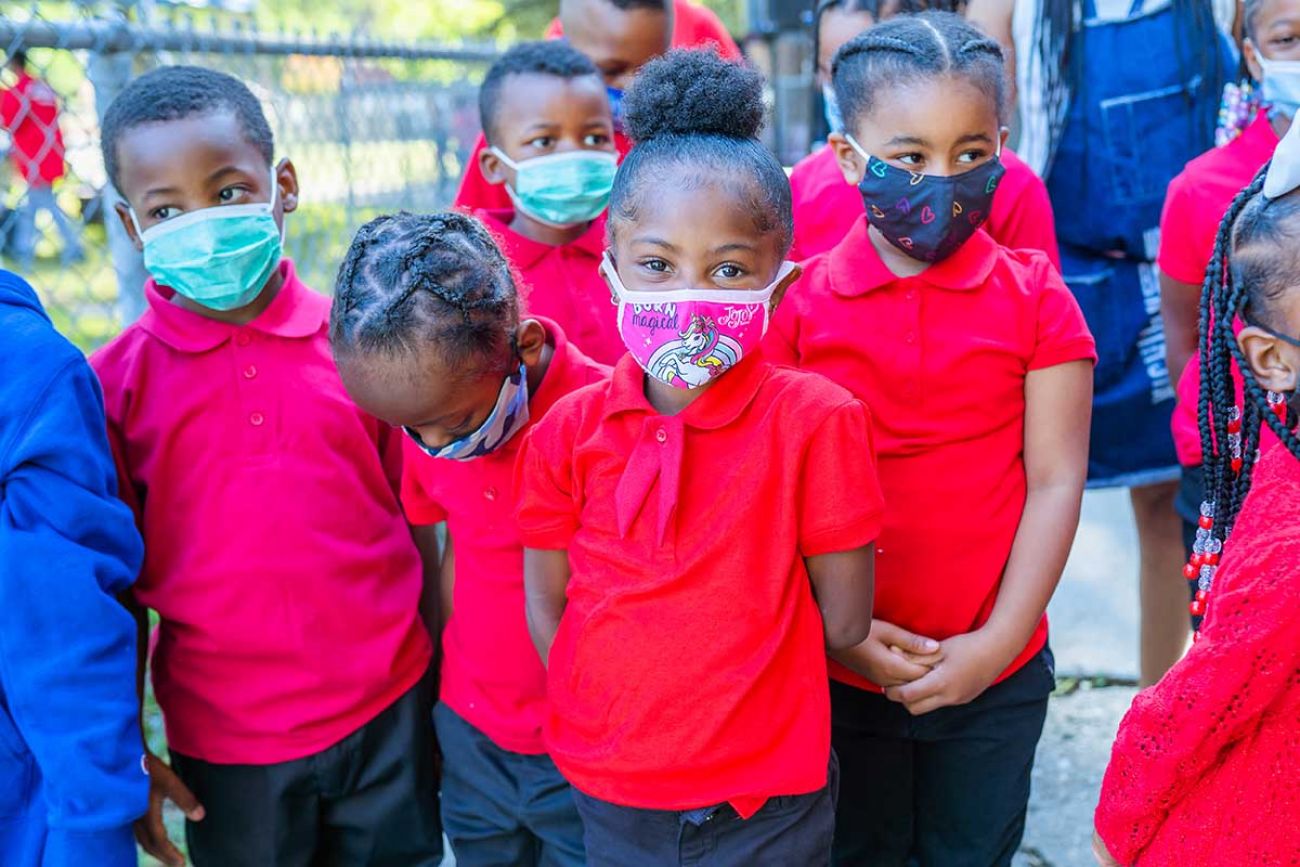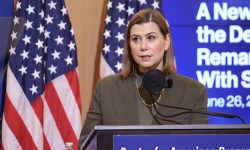Michigan schools struggle with remote days. 'This year is harder for kids.'

This article was first published on Chalkbeat Detroit on Nov. 29.
Detroit Superintendent Nikolai Vitti spent much of the last year preaching the importance of in-person learning for students’ emotional well-being.
But getting students back in the classroom was only the first step in what is proving to be a long, uphill battle to help students recover from the emotional and academic effects of the pandemic.
Detroit Public Schools Community District is going remote for three days in December and closed schools for an extra two days before Thanksgiving.
The closures help show that students and educators are under duress as COVID outbreaks and staff shortages pile on top of nearly two years of virtual learning, quarantines, masking battles and COVID fears.
Those disruptions, compounded by growing staff shortages, mean “this year is harder for kids and educators than last year,” said Kevin Polston, superintendent of Kentwood Public Schools, who led a council appointed by Gov. Gretchen Whitmer to develop Michigan’s educational comeback. “We knew it would be a multiyear process of recovery.”
Related stories:
- COVID school outbreaks skyrocket; more Michigan schools close
- As COVID rises, CDC approves boosters for all adults, Michigan urges masks
- Michigan schools seek options as staff shortages and COVID cases converge
School closures this fall make clear that efforts to rebuild relationships with students and reestablish academic routines will be a long-term project for Michigan schools. Outside of Detroit, districts such as Southfield, Eastpointe, and Ann Arbor have gone remote for days at a time in response to staffing shortages and outbreaks. The Grand Rapids district cancelled classes on two Fridays in December, calling them COVID wellness days.
Dozens of districts across Michigan canceled school through the Thanksgiving week in response to spiking outbreaks, including in Grand Haven, Muskegon, and Ypsilanti.
Although Vitti said he strongly favors in-person instruction, he argued that Detroit’s three remote learning days in December are necessary given the mental health challenges teachers and students face.
“The online Fridays will give students a break from mask wearing, the stress of COVID, the anxiety of returning to school with peers and adults they have not seen or known in two years,” Vitti said. “It’s not a long term solution but it provides a much needed break from all of the newness and challenges of returning to school.”
Districts have faced blowback for temporary closures from critics who argue that districts received a record infusion of federal COVID aid to help them give students extra time in classrooms after disruptions last year.
Sarah Reckhow, a political science professor at Michigan State University who studies education, said districts have tools available to fight COVID that don’t classroom time — notably vaccine mandates for staff.
“We have the relief funding that districts have received from the federal government, and there’s been a lot of talk that we’re going to see extended learning time,” she said.
Closures “create a disconnect. There are reasons for concern about whether districts are going to have the capacity to extend learning time, or to even meet expectations this year, when they’re having these troubles now.”
Schools across the country have reported an uptick in disruptive student behavior and social-emotional challenges, seen by many as a reflection of the acute stressors the pandemic has placed on children.
Changes to school schedules add additional stress on working families — one Detroit parent said the Thanksgiving closures could cost her a job.
Even though closures can be “impossibly difficult” for families, they may be necessary given the pressures on teachers related to student mental health and staff shortages, said Elizabeth Koschmann, a researcher at the University of Michigan who leads TRAILS, a mental health program for schools.
“I think these sporadic breaks are really essential for helping to try to chip away at some of the burnout that the staff and administrators are experiencing. For the students it’s much more of a mixed bag.”
She added: “You don’t recover from something until the problem is over. The problem’s not over. We’re still in an active crisis.”
For teachers, that crisis has meant ballooning responsibilities amid shortages of classroom aides and substitute teachers. At the same time, many students need more support than ever as they readjust to learning in classrooms.
On social media in conversation with Chalkbeat, teachers spoke about the challenges of more teachers calling out sick, and re-teaching lessons to students who had been in quarantine.
“As I communicate with teachers, most of them say the burnout rate this year is much higher” than last year, said Carrie Russell, a Detroit high school teacher. “I’m hearing horror stories of teachers who are covering every single prep, who had to give up classroom spaces.” The school year has brought an “extraordinary load” for educators, Russell added, as they navigate COVID safety protocols and contact tracing responsibilities.
“Because you’re back in the building, you’re being asked to do more, because you have fewer subs, and teachers are having to be quarantined. And when other teachers are out the burden becomes higher for you,” she said.
Returning to the classroom has been challenging for many students, adding to the pressure and workload for educators. Russell believes the remote instruction days could better support educators adjusting to the increased workload.
“If you have a ninth grader sitting in front of you, it’s like having a seventh grader… emotionally,” she said. “They have had a year of unsupervised, unstructured learning and it’s a tough task to get all of them ready to come back and be students.”
The increasing number of school outbreaks is adding to the challenges teachers and school administrators face. After reporting roughly 10 new cases linked to outbreaks every week through September and October, the district saw 128 new cases last week.
As Detroit leaders move to give students and teachers a break, they are considering whether to pour more federal COVID funds into hiring staff, such as guidance counselors and social workers, who will directly support students. The district has already planned to invest $34 million to address the mental health needs of students, families, and staff.
“We don’t have an indefinite amount of time to try to support students through this,” said Detroit school district board member Sonya Mays in a recent finance committee meeting.
“At some point, if we don’t make the biggest, most impactful investment in social-emotional wellbeing” ... students “are not going to hit the achievement levels that they otherwise could have.”
“If the choice is putting more money in schools, or doing as much as you can to support students and teachers, quite frankly, to get through this moment, we really have to have an honest conversation about that.”
The remote instruction days have also been described as a time to thoroughly clean school buildings — something many parents and teachers have called for. The federal Centers for Disease Control recommends cleaning in facilities, however the agency makes it clear that the risk of infection from touching surfaces is low.
Even under pressure from staffing shortages, there are steps schools can take now to support students emotionally and pave the way for academic recovery, said Melissa Schlinger, vice president at Collaborative for Academic, Social, and Emotional Learning, a consulting company that helps schools improve student mental health.
“We need to get back into routines and connect with each other,” she said. “Give teachers and staff members permission to focus on rebuilding relationships and not be so stressed out about learning loss. If we don’t address these social emotional pieces first, it will be a lot harder to get kids to lean into the academic rigor.”
But supporting students isn’t easy, and existing staff are already stretched thin.
“I’m trying my hardest to keep track of who is supposed to be where and provide education to all my students both in person and virtual,” said Marnina Falk, a Detroit district teacher who spoke during November’s school board meeting about her challenges tracing close contacts in her classroom.
“Doing that on top of everything else on my plate is becoming impossible.”
Michigan Education Watch
Michigan Education Watch is made possible by generous financial support from:
Subscribe to Michigan Education Watch
See what new members are saying about why they donated to Bridge Michigan:
- “In order for this information to be accurate and unbiased it must be underwritten by its readers, not by special interests.” - Larry S.
- “Not many other media sources report on the topics Bridge does.” - Susan B.
- “Your journalism is outstanding and rare these days.” - Mark S.
If you want to ensure the future of nonpartisan, nonprofit Michigan journalism, please become a member today. You, too, will be asked why you donated and maybe we'll feature your quote next time!






